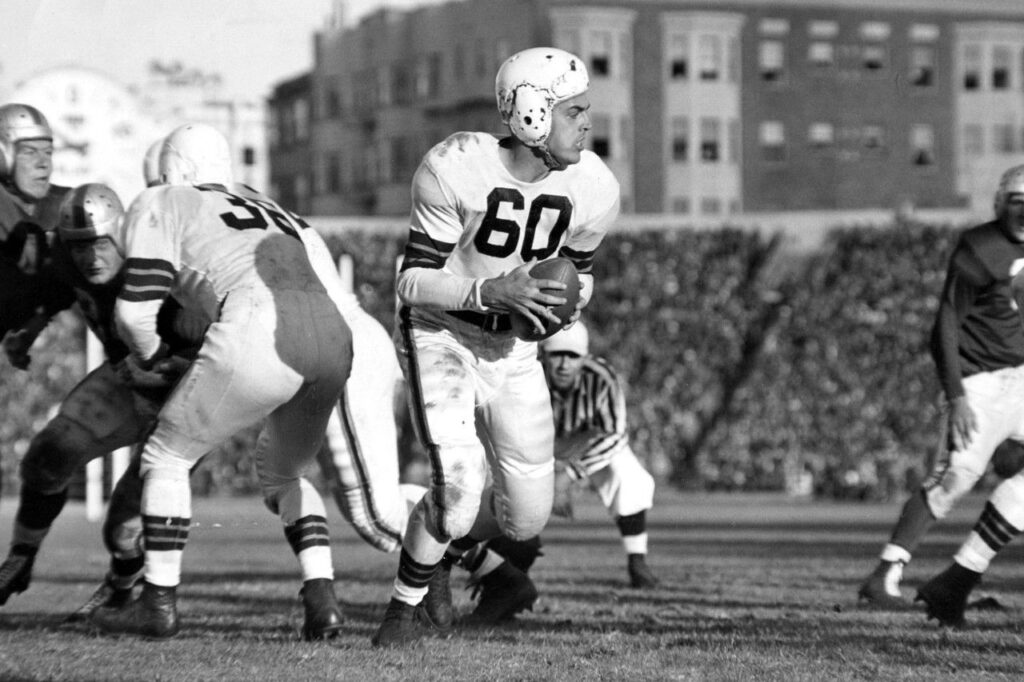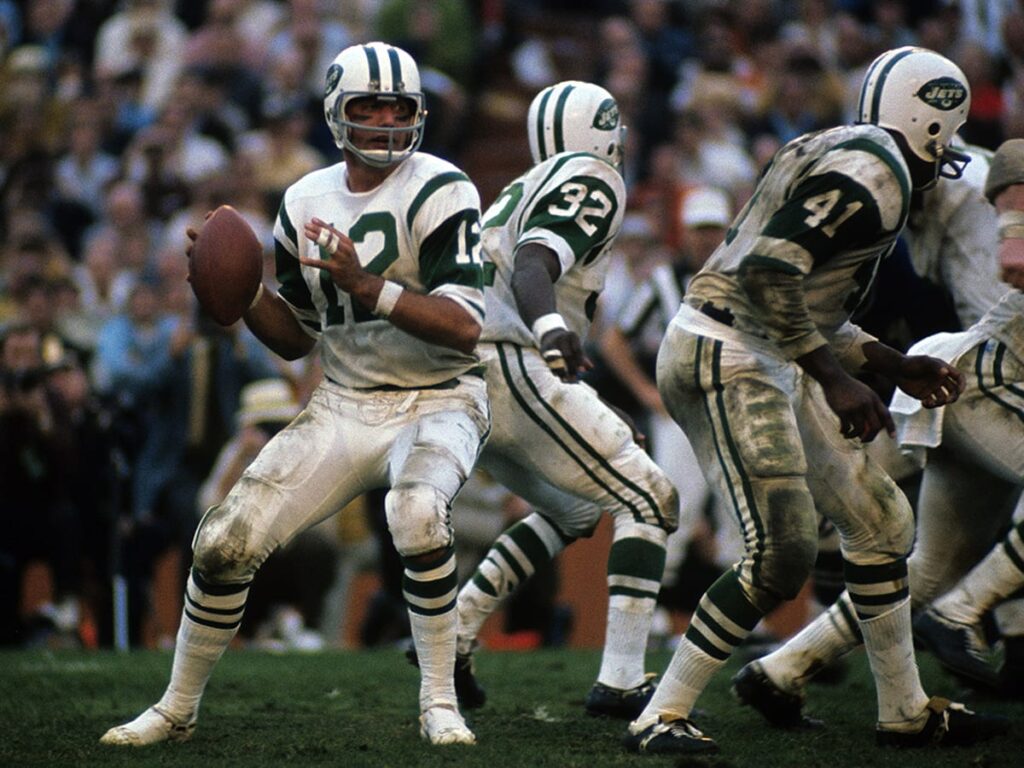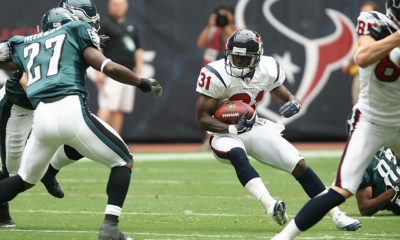
With the exciting news that the XFL and USFL are approaching a merger, a world of questions has opened up in the football world. What will happen to the teams we’ve grown to love? Are we getting a new name for the league? Which elements of leadership from each side will find roles in the new league? What’s happening to the 2024 season?
While there is a large degree of uncertainty moving forward, it is a fascinating time for spring football, and as Mark Perry pointed out in the latest episode of the XFL Podcast, this move will likely be beneficial for the survival of both leagues.
But as a history guy, every time I look forward, first I look back. The sports world is no stranger to the merger process, and nearly every major sports league in America has undergone this process at some point.
In baseball, The American League and The National League joined up to become the MLB in 1902, and the game has been a cash cow ever since. The American Basketball Association merged with the National Basketball Association n 1976 to create the NBA we know today, and in 1979 four teams from the World Hockey Association joined the National Hockey League.
These have all been successful ventures, as the MLB, NBA and NHL represent three of the most successful entities in American sports. But of course, the league we can draw the most parallels to in this case is the NFL itself.
The 1949 NFL-AAFC Merger

While the more recent and final merger in football memory is the AFL-NFL pairing, this built the bones of the modern NFL. The National Football League had existed since 1920, and despite jostling with a myriad of smaller leagues, had largely dominated the market by the time the All American Football Conference formed in 1944. In its initial phases, the AAFC was just a league on paper, but it did manage to beat out the United States Football League and the Trans-American Football League, neither of whom made it to market.
With the end of WWII, there was a resurgence of interest in football domestically as men returned home from the war to colleges, their families and the normalcy of peacetime life. The AAFC hit this in stride and created 8 teams to compete with the NFL’s 10 franchises.
In the Eastern Division, there were the New York Yankees, Brooklyn Dodgers, Buffalo Bisons and Miami Seahawks. The Western Division hosted the Cleveland Browns, Chicago Rockets, Los Angeles Dons and San Francisco 49ers.
New Competition, New Concepts
Their inaugural season in 1946 saw the AAFC sign a majority of the 1946 College All-Stars and two Heisman winners, putting them in direct competition with the NFL. The NFL was looking to come back from WWII, in which roughly 600 coaches and players served in the Armed Forces, understandably limiting operations, and even leading to the combining of the Philadelphia Eagles and Pittsburgh Steelers in 1943.
One of the biggest forces behind the AAFC’s success was none other than Paul Brown, whose innovative offense introduced advanced passing concepts unlike anything in the NFL. Brown also was the first pro coach to bring Black football players back into the fold after the 1933 policy of segregation in the NFL. Much like spring football leagues of modernity, the AAFC sourced players from HBCUs, though they did have the luxury of being able to compete financially with NFL contracts in turn.
The AAFC’s surge into the market created tensions with the NFL, as the upstart league ignored NFL draft rights and started a bidding war over NFL Players. The competition continued over the course of four seasons from ’46-’49, during which the two entities negotiated back and forth about various acquisitions and deals.
Finally, late into the 1949 season the NFL agreed to admit three and a half teams. Coincidentally the Cleveland Browns (Otto Graham), San Francisco 49ers (Frankie Albert) and Baltimore Colts (YA Tittle) brought 3 of the best passers from the AAFC into the NFL fold. The Los Angeles Dons also merged with the NFL’s Rams so as to not compete in the same market.
This pitched battle in the late 40’s may get less of a spotlight these days, but in the end it brought some of the NFL’s most longstanding and beloved franchises under the same roof.
The parallels I see between this merger and the one at hand, is the competition between markets in the merging process. The NFL specifically excluded teams to avoid having multiple franchises in the same city, and with the scale that Spring Football is operating at, moving teams around may be prudent. Not advocating for axing anyone here, but we may see new leadership opting to relocate one of the Houston teams, as we could otherwise see 1/4 of the new league in Texas, and two teams in the same market.
The 1966 AFL-NFL Super Bowl Merger

To many fans the modern era of pro football began in 1960. Nearly a third of the modern NFL is populated by AFL teams, including the Patriots, Bills, Titans, Dolphins, Jets, Bengals, Chiefs, Broncos, Chargers and Raiders. The bones of the current AFC trace their roots back the the fourth iteration of an “American Football League”, the previous ones (connected in name only) running short stints in 1934, 1939 and 1944.
The AFL brought football to markets previously passed over by the NFL, which was focused heavily on the coasts and in the midwest, and it quickly moved competing teams like the Los Angeles Chargers and Dallas Texans to new markets in San Diego and Kansas City. This independence allowed them to grow longstanding and loyal franchises
The AFL and NFL were also engaged in a bitter if lopsided battle over talent. While the majority of college stars opted for the long established National Football League, the upstart AFL (4.0?) was able to land big names like Joe Namath, Floyd Little and Billy Cannon.
Cooperation Among Rivals
Rivalry between these two leagues was intense, and while there was an unspoken agreement settled on to not sign players under contract on the other side, it took half a decade of jostling before the two realized they needed cooperation to continue growing their own brand.
In 1966, led by Tex Schramm of the Dallas Cowboys and Lamar Hunt of the Kansas City Chiefs, the AFL and NFL announced a merger agreement. The leagues would operate independently from 1966-1969 and meet once yearly in the Super Bowl before joining fully as the NFC and AFC in 1970.
The biggest key to this merger was the fact that the leagues were operating at near-peer capabilities, and while the NFL had the edge it was clear that the AFL was a serious competitor.
This same factor applies to the USFL and XFL, both of which have their own merits. However, they are similar in gravitas at this point in their development, and while each could claim an edge in NFL partnerships or media deals, it is apparent that a balanced merger is best for everyone.
I could see a similar set of circumstances to the AFL-NFL merger where each side keeps their franchises and organizes them into conferences which compete and ultimately play for a championship. The most obvious answer here seems the most logical, and given the parity between the two parties I hope to see something along these lines.
Moving forward into this merger process is going to be a wild ride, make sure to stay tuned here at XFL News Hub for all the latest.
Unleash the Action: Sign up for XFL Insider and Fuel Your Passion for Football!
Matt Nagashima has been covering the XFL since before the 2019 Draft, and has witnessed history being made as a Credentialed Reporter for the Dallas Renegades. While he is engrossed with the X's and O's, the roster building and more, it has always been his goal to keep the players first in mind in coverage, showing the human aspect of this sport behind all the action on the field. With Dany Garcia and Dwayne The Rock Johnson now at the helm, he's excited to see all the opportunities that this league will create for players to showcase their talent and make their dreams come true.

USFL and XFL Merger: A Deep Dive into the Historic Collaboration
Latest Podcast
-


XFL Podcast
/ 1 year agoXFL-USFL Merger Insights: Houston’s Future, Draft News, Player Movement – Ep. 216
Welcome to Episode 216 of the “XFL Week In Review,” your premier destination for...
By Mark Perry






